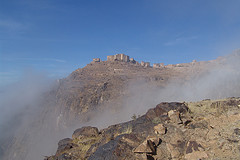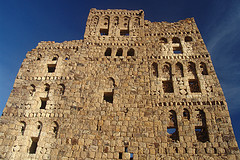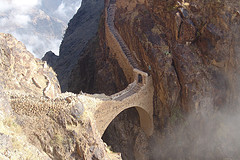Village Life
Friday, November 16th, 2007After leaving Luang Prabang, we headed north via songthaew (a sort of pick-up truck that constitutes most of the land-based public transport in Laos) and boat to the village of Muang Ngoi, which was a nice place to relax for a few days. It’s only accessible by boat, and there are only two small slow boats per day that go there from Nong Kiaw, so that limits the number of tourists somewhat despite the village’s reputation as being the ‘new Veng Viang’ (we haven’t been to Veng Viang yet, but I am sure it is infinitely more developed than quiet Muang Ngoi…). I found Muang Ngoi to be a very laid-back place with friendly people, and no motor transport was a bit of a bonus as well that added to the peaceful, river-bank vibe.
We were lucky to be able to meet a couple of the teachers from the local high school and talk to them a little bit – one of them teaches history, geography, music and sport! Since Muang Ngoi is the largest village in the area, students come from far away to go to school. The teacher told us of a couple of students from a village four hours walk away who walk to Muang Ngoi at the start of each week, have had some sort of shelter that has been built for them to sleep in during the week, then walk back four hours to their village on the weekend to see their parents. The teacher was very enthusiastic about his job and about the attitudes of the students, so it was nice to hear that.
On the second day we walked for a couple of hours through rice fields (at harvest time) to another very small village, Ban Huay Baw, where we stayed overnight for 50 cents. All the houses here are built with bamboo and wood only and it was quite interesting to spend a night in a tiny Lao village among many chickens and ducks. Both Ban Huay Baw and Muang Ngoi have four hours of electricity each night so it was quite a simple experience but an enjoyable one. Unfortunately our walking trip to a waterfall the next morning was a bit of a disaster, as we slogged our way through a stream and some mud and many leeches before reaching the entirely unimpressive falls. But not to worry; we were back in Muang Ngoi that night and had a bit of a party with two other Aussies and a bunch of locals over some duck (broke the veg. streak, I know, but I’ve been pertty good other than that) and lao-lao, a potent local spirit that can be anywhere from 30-90 per cent alcohol and is pretty nasty, but incredibly cheap (about US$1.50 for a one litre bottle).
We’ve now headed east to a remote part of Laos, and I’ll blog more about that soon.



